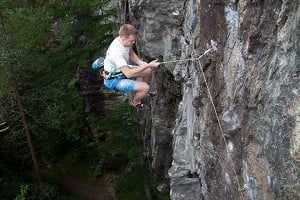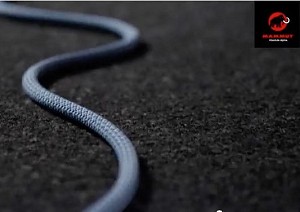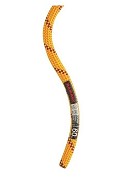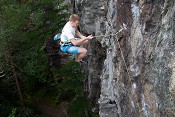
The origins of Mammut's rope making heritage can be traced back to rural Switzerland over 150 years ago.
In 1862 a skilled rope maker, Kaspar Tanner founded a business creating ropes for agricultural use. Over the years, his business grew and he diversified into manufacturing products for the fast-growing mountaineering community
Since then, the company he founded – Mammut - has grown into one of the world's leading names in climbing equipment and ropes.
Over the years, Mammut has built up an unrivalled experience in designing and manufacturing ropes for climbers and mountaineers worldwide. Today, Mammut ropes are still designed, produced and tested at Mammut's factory in Switzerland.
This Spring sees Mammut relaunch its range of ropes with a series of exciting new technologies to cater for all climbers – from those heading out for a day's cragging to Alpine mountaineers.
Mammut ropes are now segmented into three distinct categories – Dry, Protect and Classic.
Safety: COATINGfinish™ on both the core and sheath ensures that DRY ropes absorb almost no water and don't freeze at low temperatures. Even after being soaked in water for 15 minutes, a DRY rope achieves 80% of its specified number of standard falls
Durability: in abrasion tests, DRY ropes achieve 50% higher abrasion resistance than ropes of the same diameter with a conventional finish. Sealing the core and sheath provides protection from dirt and increases durability.
Water Repellancy: the Coated Core and Coated Sheath Technologies gives DRY ropes lasting water and dirt repellancy. DRY ropes only increased in weight by 1% during UIAA water absorption tests.
Area of Use: DRY ropes cover all uses: from wall and sport climbing to alpine mountaineering and ice climbing.
With outstanding handling and high durability, this rope is a great all rounder. DRY treatment provides optimum protection from the elements.
UIAA Falls (2 ropes at 80kg) > 20
UIAA Falls (1 rope at 80kg) 12 - 13
Weight per m 47g
Water absorption 1%
Ideal for.. mixed and ice climbing, Alpinism, multi pitch rock climbing
Safety: PROTECT ropes feature high performance and offer one to two more standard falls than CLASSIC ropes. When wet, a PROTECT rope still achieves 50% of its specified number of standard falls.
Durability: the COATINGfinish™ gives PROTECT ropes a 40% higher abrasion resistance than non-treated ropes which in turn makes them more durable
Water Repellancy: Coated Sheath Technology provides PROTECT ropes with resistance to dirt and water. PROTECT ropes increased in weight by 36% on UIAA water absorption tests.
Area of Use: PROTECT ropes combine performance and durability and are ideal for indoor and outdoor rock climbing.
A highly popular Mammut rope – combining small diameter, low weight and high performance.
UIAA Falls (1 rope at 80kg) 7-8
Weight per m 58g
Water absorption 36%
Ideal for.. cragging and multi pitch climbing
Safety: CLASSIC ropes are untreated so are ideal for climbing indoors or on sport climbing routes where they are not exposed to water.
Durability: the balanced sheath to weight ratio of CLASSIC ropes means they offer high durability.
Water Repellancy: CLASSIC ropes do not feature a water repellent treatment and the weight of CLASSIC ropes increased by 46% on the UIAA tests.
Area of Use: Ideal for outdoor climbing in dry conditions and indoor climbing. They combine high quality and value for money.
Hardwearing and durable this "workhorse" single rope is ideal for wall sessions and summer sports climbing
UIAA Falls (1 rope at 80kg) 8-9
Weight per m 67g
Water absorption 46%
Ideal for.. Indoor and sports climbing
UIAA WATER ABSORPTION TEST
The UIAA water absorption test for ropes is the first test to measure and compare water repellancy in ropes.
- The rope is pulled through three new M14 nuts. This simulates wear inflicted on a rope during use.
- The dry rope is then weighed.
- The rope is then immersed in water at a rate of 2 litres per minute for fifteen minutes.
- The rope is then weighed.
- The difference in weight between the dry and wet samples is calculated as a percentage
Only ropes that increase in weight by 5% or less can use the UIAA Water Repellent safety label.












Comments